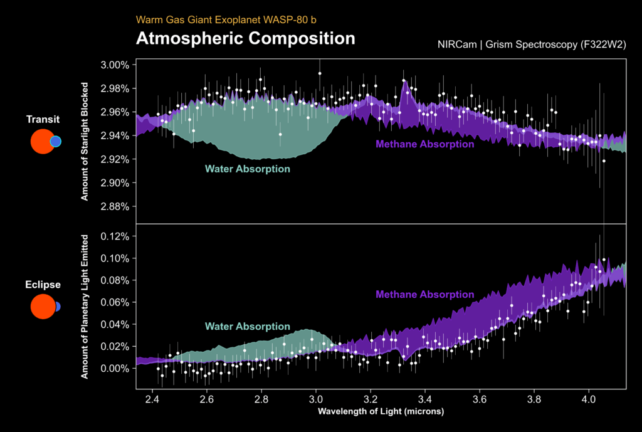NASA announced the discovery of methane on a distant exoplanet
- November 24, 2023
- 0
If there’s one chemical that’s causing excitement in the search for biosignatures on other worlds, it’s methane. This is not an empty joke because it has both biotic
If there’s one chemical that’s causing excitement in the search for biosignatures on other worlds, it’s methane. This is not an empty joke because it has both biotic

If there’s one chemical that’s causing excitement in the search for biosignatures on other worlds, it’s methane. This is not an empty joke because it has both biotic and abiotic resources. But its detection in the atmosphere of an exoplanet means the planet deserves closer examination. Methane attracts the attention of scientists because it remains in the planet’s atmosphere for a short time. Methane cannot survive starlight for long, at least not in Earth’s atmosphere. It undergoes photodecomposition and requires constant renewal to maintain its presence in the atmosphere.
If there is a lot of methane on a rocky planet, then the source must be very large, making a biotic source likely. Biological activity on Earth creates enormous amounts of methane. It is not difficult to produce methane metabolically. Methane is common in our solar system, although not in large quantities. As far as scientists can tell, these are all abiotic. This can be explained by processes such as serpentinization.
Serpentinization is a natural abiotic process involving water, carbon dioxide and the mineral olivine. Olivine is common on Earth and is the main component of our planet’s upper mantle. We also found it on the Moon, Mars and some asteroids.
Recently, the James Webb Space Telescope detected methane in the atmosphere of WASP-80b, a gas giant about half the size of Jupiter. WASP-80b orbits a K-type main sequence star that is approximately 1.5 billion years old. WASP 80 is approximately 162 light-years away, and WASP-80b is the only planet discovered around the star.

Since WASP-80b is a gas giant, life is out of the question except in some extreme science fiction scenarios. However, serpentinization of olivine, the best-known abiotic source of methane, is also unlikely because WASP-80b is not a rocky planet. But it’s still interesting to find it.
This is partly because we can now compare the exoplanet to the methane-rich atmospheres of Uranus and Neptune in our solar system. This will only help us better understand future methane detections.
A new paper published in the journal Nature presents the findings. It’s called “Methane in the atmosphere of the hot exoplanet WASP-80b.” The lead author is Taylor Bell, a postdoctoral researcher at the Bay Area Environmental Research Institute.
WASP-80b is a hot Jupiter. Its temperature is approximately 550 Celsius (1025 F; 825 K). In other words, it is located between hot Jupiters such as HD 209458 b (the first discovered transiting exoplanet) and cold Jupiters such as the largest planet of our Solar System. The temperature of our Jupiter is about 112 Celsius (235 F; 125 K.)
An important point is temperature. Detections of methane in exoplanet atmospheres are lacking, so at this stage of the game each detection plays an important role in developing atmospheric theory and guiding further research. WASP-80b’s temperature “put it into an interesting transition regime, when equilibrium chemical models predict that CH4 and CO/CO2 features should be visible in the planet’s transmission and emission spectra…” the study authors explain.
WASP-80b is very close to its red dwarf and takes only three days to reach orbit. Because the planet is so far and so close to its star, even the powerful JWST cannot see it. Instead, astronomers used JWST to study the combined light from star and planet during transits and eclipses.
Telescopes like Hubble and Spitzer, both of which can observe in the infrared, haven’t detected as much methane in exoplanet atmospheres, though not as much as JWST. The lack of detections has led scientists to develop theoretical explanations for how methane might become depleted in the atmosphere. High metallicity, high internal heat flux, and other causes have been investigated as mechanisms for methane depletion.
Source: Port Altele
As an experienced journalist and author, Mary has been reporting on the latest news and trends for over 5 years. With a passion for uncovering the stories behind the headlines, Mary has earned a reputation as a trusted voice in the world of journalism. Her writing style is insightful, engaging and thought-provoking, as she takes a deep dive into the most pressing issues of our time.